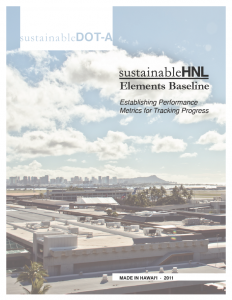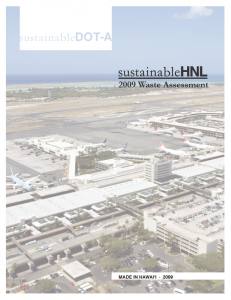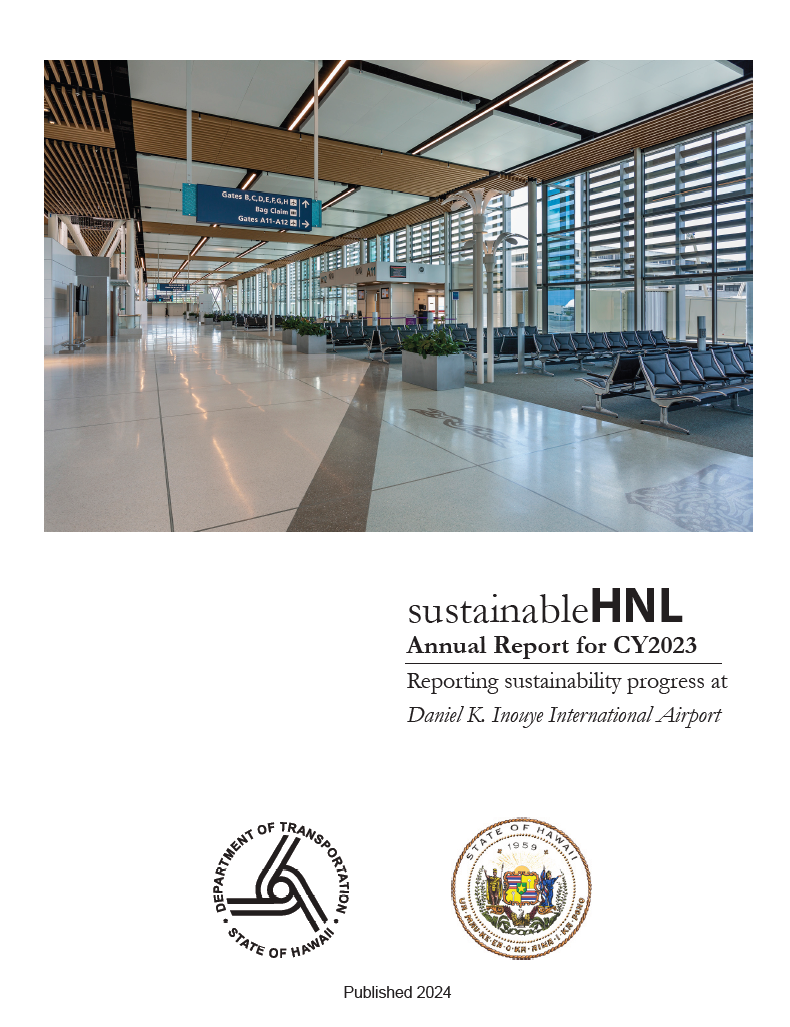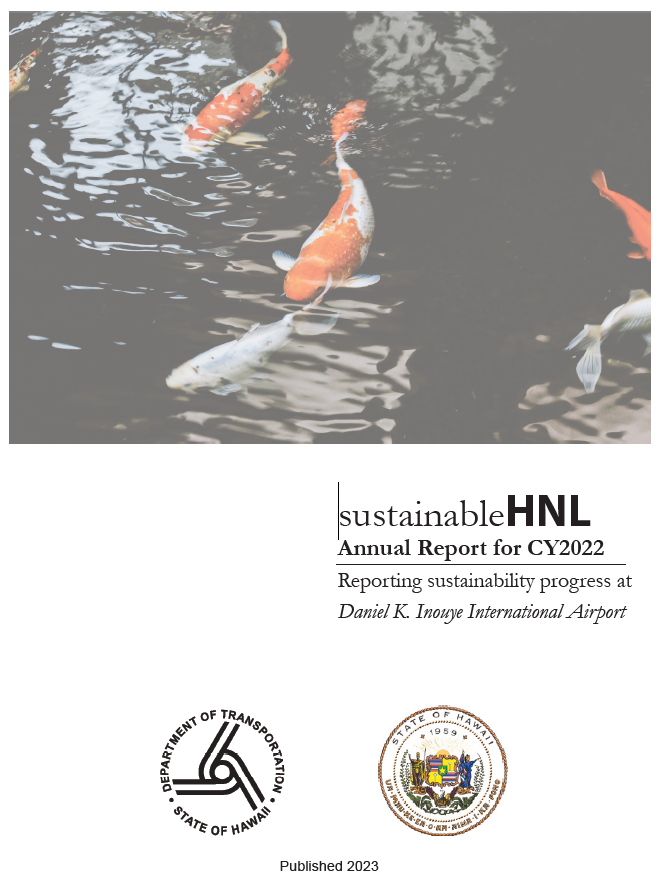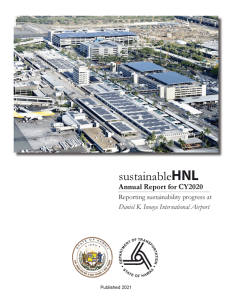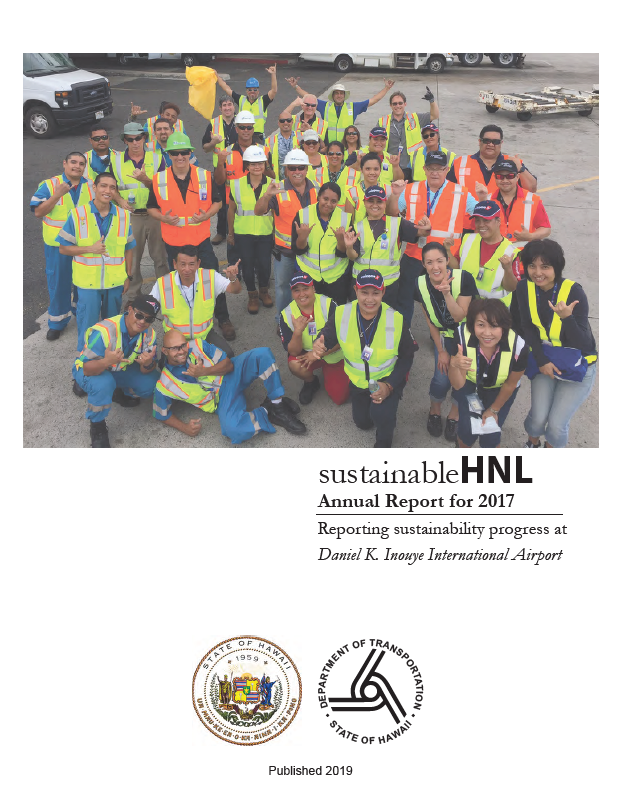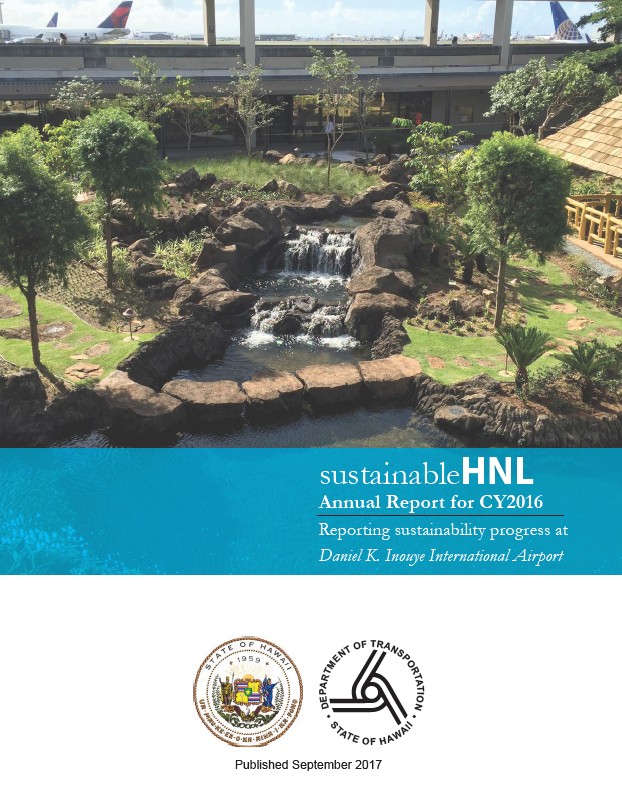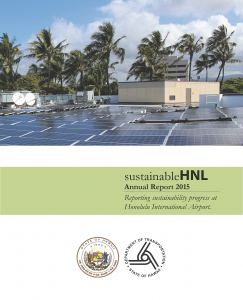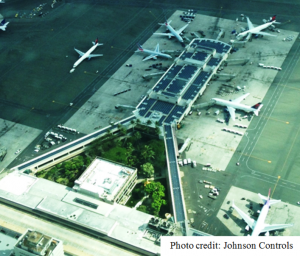SustainableHNL
SustainableHNL (sHNL) is the first airport sustainability initiative and pilot for the Hawaii Department of Transportation—Airport’s Division, SustainableDOT-A’s (sDOT-A) airport system sustainability program. SustainableHNL (sHNL), was launched through the leadership of the sHNL Committee—a dynamic, interdisciplinary, and consensus-based team of DOT-A and Oahu District stakeholders inspired by the vision of Hawai’i airports as leaders in sustainability. The sHNL Committee began working together with the understanding that HNL protocols would be replicated, yet uniquely implemented across Hawaii’s airport system. To date, the sHNL Committee has engaged stakeholders, conducted assessment, published the SustainableHNL- Elements Baseline report, the Elements Baseline Update report, and the Sustainable Management Plan.
SustainableHNL Committee (sHNL Committee)
The sHNL Committee was created to make executive decisions to sustain HNL’s goals as described in the HNL Sustainability Policy. The sHNL Committee is comprised of individuals that stem from the ACI-NA’s EONS model. The sHNL Committee is able to assess projects and programs as a holistic body and conclude decisions that will most benefit the airport. The role of the sHNL Committee is to:
-
Develop and Foster a Sustainable Culture
-
Lead Sustainable Initiatives
-
Educate Others of Sustainable Practices
-
Monitor Progress of Sustainable Developments
-
Analyze Life Cycle Operating Costs
-
Participate in Sustainability Partnerships
sHNL Sustainability Policy
The HNL Sustainability Policy supports the DOT-A’s goals to actively pursue opportunities for airport sustainability at HNL.
Sustainability Policy for the Honolulu International Airport
HNL Sustainable Management Plan
The HNL Sustainability Management Plan (SMP) has been developed to support Sustainable HNL and its ongoing mission to incorporate the principles of sustainability in all aspects of airport operations. Built upon the 2009 sHNL-Elements Baseline and 2014 Baseline Update, this SMP provides the framework for a management plan rooted in the best practices of sustainability. The goal of the SMP is to optimize airport operations while reducing environmental impacts, realizing economic benefits, and improving community relations. Through the SMP, HNL will align with the State and local goals, policies, and initiatives by conducting a comprehensive analysis of how and where sustainability management is implemented into long-term planning.
|
Brochure of Sustainable Management Plan |
Sustainable Management Plan |
sHNL Policies & Documents
|
|
||
|
|
2011 SustainableHNL-Elements Baseline |
2009 HNL Waste Assessment Report |
sHNL Annual Report
|
Annual Report 2023 |
Annual Report 2022 |
Annual Report 2021 |
Annual Report 2020 |
Annual Report 2019 |
|
|
|
|
Ongoing Sustainability Efforts
Highlights of Sustainability Efforts Across DOT-A
The slideshow presentation highlights the areas of sustainability that HNL is making progress. There are too many areas to cover so these are just the highlights.
Energy Savings Project HNL
HNL is a shining example of how the DOT-A is working toward the Hawaii State goal of 100% clean energy by 2045.
Project size
- 5,596,869 sq. ft. of buildings
Expected Energy Savings
- 40% average annual energy savings (38,603,8867 kWh)
Expected Annual Utility Cost Savings (Electricity and Water)
- $10.9 million first year savings
Expected Annual Carbon Emissions Reduction
- 27,601 metric tons of CO2
Airport Carbon Accreditation
Daniel K. Inouye International Airport is celebrating 8 years of sustainability leadership. Between 2014 and 2021, the Daniel K. Inouye International Airport reduced its carbon emissions per passenger by 41%, achieving accreditation from third party Airport Carbon Accreditation and recognition by Airports Council International – North America (ACA website).
Launched by Airports Council International – Europe, the Airport Carbon Accreditation program has a goal of carbon neutrality at airports across the globe. As part of Airport Carbon Accreditation, airports commit to reducing their emissions by making investments in heating and lighting efficiency technology, electric, hybrid or gas-powered vehicles, public transport incentive schemes, less corporate travel, and stakeholder engagement to encourage further emissions reductions. Renewal requires the airport to take additional steps toward carbon reduction.
HNL was one of the first 10 airports in North America to become accredited, and in 2019 there are now 47 airports. (ACI NA press release). Fact sheet
FOD Walk and Recycle Drive
HNL’s FOD Walk program is a recurring volunteer event to address the issue of Foreign Object Damage (FOD), which threatens the safety of aircraft, airport vehicles, equipment, and passengers. The event brings together the airport tenants and contractors to clean up the airport and build awareness while having fun.
HNL’s Recycle Drive program is a recurring event to address the issue of bulky item disposal for tenants which can sometimes be dumped illegally on airport property. The event provides collection and hauling services for free to tenants for bulky items, scrap metals, office equipment and electronics.
Summaries and Photos
LEED Projects
The Hawaii Airports Modernization Program is pursuing LEED or equivalent certification for the following projects. More info can be found here: https://www.hawaiiairportsmodernization.com/
-
HNL TMP New Mauka Concourse Improvements (LEED Gold Certified)
- HNL Consolidated Rental Car Facility (LEED Silver Certified)
Due to the nature and variety of airport project types and with LEED being only applicable to occupied buildings, further initiatives were taken by the DOT-A to ensure sustainable initiatives were implemented in all projects. The Sustainable High Performance Guidelines (SHPG) was developed to provide a process to facilitate the integration and implementation of sustainable best practices in all developing projects.
Sustainability Projects
The DOT-A has taken proactive measures to develop sustainable practices that are in line with the State and the aviation industry, including the following:
Initiatives Completed:
- Energy savings project to implement and manage energy conservation measures (ECMs) backed by an energy savings performance guarantee. The projected annual savings is $10.8 million dollars from the estimated 38.5 million kWh saved:
-
Participated in HECO’s Green Lights project since its inception, converted T-12 fluorescent lights with T-8 fluorescent lights with electronic ballasts.
-
Upgraded the airfield taxiway light fixtures and guidance signs with LED technology in 2007. HNL was able to achieve a reduction in energy consumption of nearly 600,000 kWh per year.
-
Installed a chilled water loop and replaced a/c chiller plants. The chilled water loop was completed in 2009; the Diamond Head chiller plant was completed in 2009. HNL will reduce their energy usage by 3,850 MWh annually.
-
Replaced light fixtures in all Parking Structures with fluorescent fixtures. The existing fixtures used 175 watts each while the fluorescent fixtures uses 85 watts and have a five times greater life expectancy.
-
Added remote control and data acquisition devices (Supervisory Control and Data Acquisition or SCADA) to electrical switches to allow the Energy Monitoring and Control Systems (EMCS) to better control electrical use for energy conservation.
-
HNL’s irrigation is tied into non-portable water from Sumida Watercress Farm.
-
Evaluating the use of LED lights in certain areas of the airport.
-
Replacing existing 400 Hz converters with more energy efficient converters. These provide power for aircraft at the gates to run their air conditioning and other electrical needs. Otherwise, the these aircraft would have to run their on-board Auxiliary Power Units (APUs) which would use the on-board fuel and less efficient air pollution control devices.
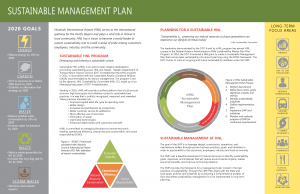

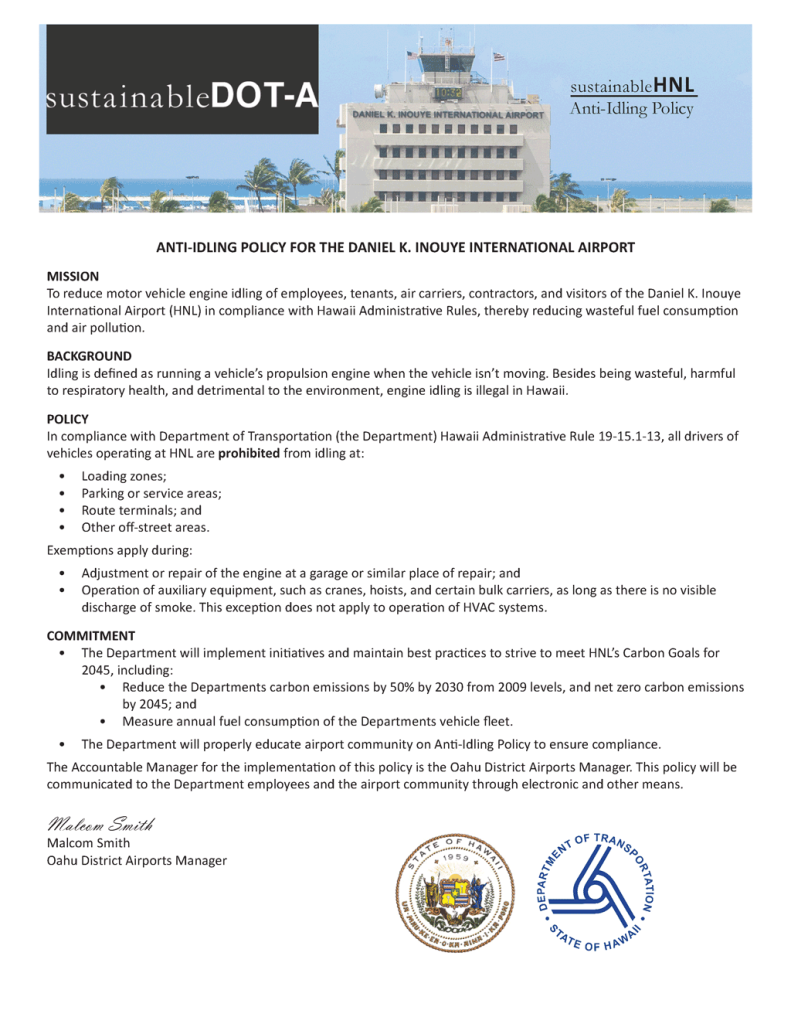 Anti-Idling Policy for the Daniel K. Inouye International Airport
Anti-Idling Policy for the Daniel K. Inouye International Airport
